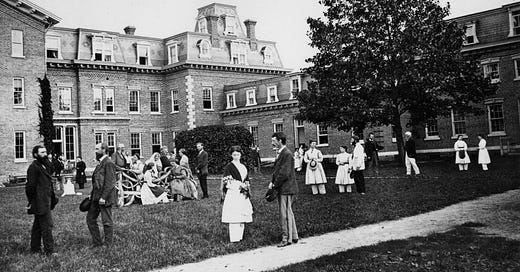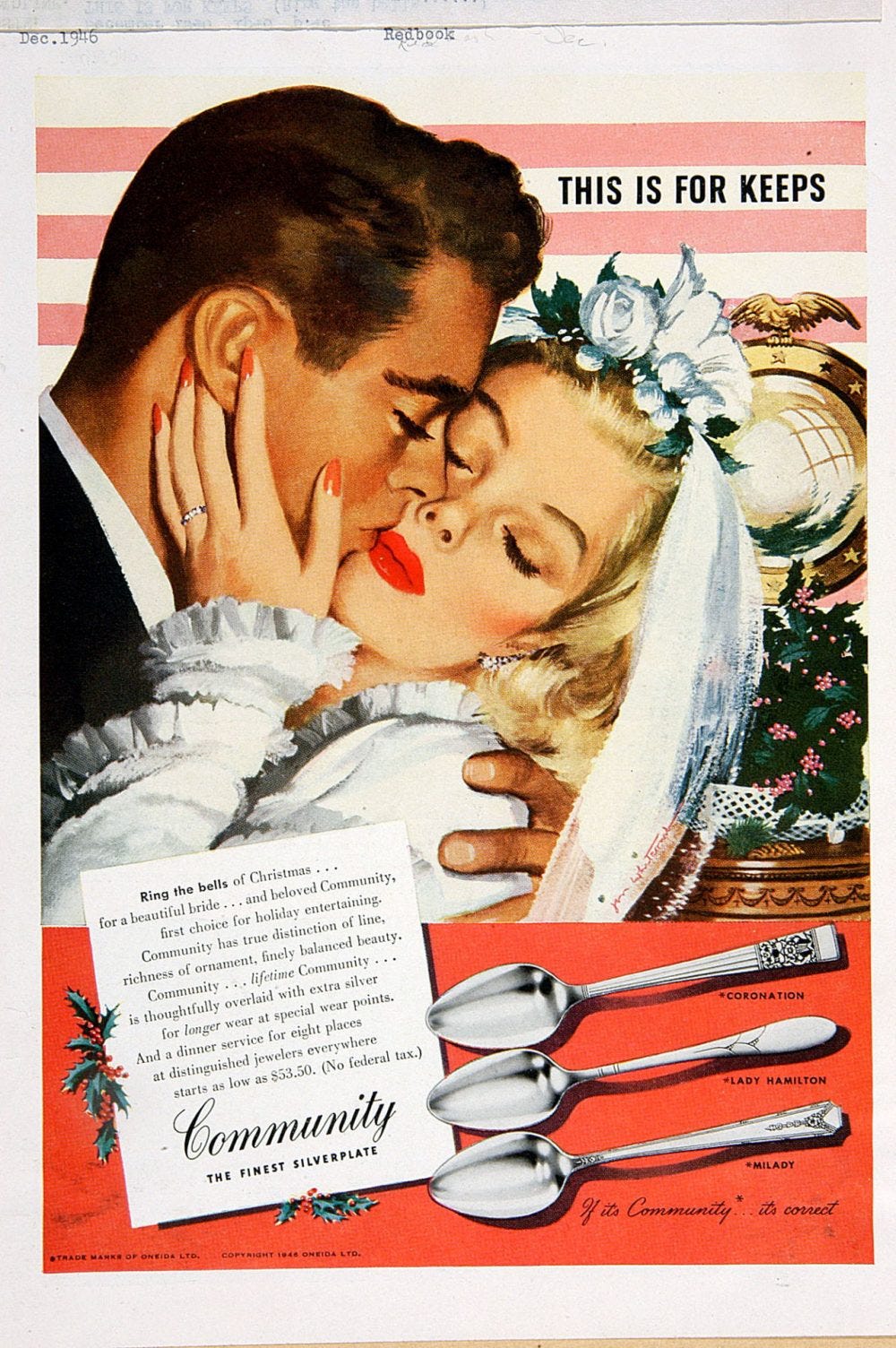The Oneida Community was founded by John Humphrey Noyes in 1848. The commune settled near Oneida, New York, and settled on that for their name, apparently. They were religious, in the Puritan slant, with a bit of perfectionism for flavor. The main line of belief was that Jesus Christ had already returned in 70 A.D. Because of this, they believed it was possible to bring about Jesus's millennial kingdom all on their lonesome, and that they could be free of sin and Perfect in this world, not just in Heaven. To be fair, they didn't come up with this concept, it's an aspect of the definition of the term "perfectionism". And there was a lot of this going around in the Millenarian days.
For all that bluster, the commune was quite typical for the times. They practiced a standard of communal property and possessions, group marriage, male sexual continence, and mutual criticism.
The community began with eighty-seven members, by the time of its 1878 peak there were 306 members. Smaller splinter communities set up shop around New England. By 1881 the Oneida Community was dissolved and converted into a joint-stock company. This became the silverware company that some may know as Oneida Limited.
Despite the community's unimpressive numbers, it had a massive bureaucracy of twenty-seven standing committees and forty-eight administrative departments. All community members were expected to work, "each according to his or her abilities" yada yada yada. Women did the domestic work while men dallied in the fields.
Skilled jobs tended to be held by one member, things like finance and legal records, and they were held by single individuals throughout the whole life and death of the commune. For the unskilled work, community members rotated. This was housework, fieldwork, and the various cottage industries. As Oneida began to thrive, outsiders were hired to work these positions as well. The community was a major source of employment for the area.
Their secondary industries consisted of the crafting of leather travel bags, woven palm frond hats, rustic garden furniture, game traps, and some merch for their tourists. The manufacture of silverware began in 1877, which is relatively late in the life of the commune, and it is the only Oneida industry that still exists.
The Oneida commune strongly believed in a system of free love, which they called Complex Marriage. Any member was free to have a mess around with any other who consented. Jealousy and exclusive relationships were frowned upon. John Noyes developed a certain distinction:
Complex marriage meant that everyone in the community was married to everyone else. All men and women were expected to have sexual relations and did. The basis for complex marriage was the Pauline passage about there being no marriage in heaven meaning that there should be no marriage on earth, but that no marriage did not mean no sex. But sex meant children; not only could the community not afford children in the early years, but also the women were not enthusiastic about a regime that would have kept them pregnant most of the time. They developed a distinction between amative and propagative love. Propagative love was sex for the purpose of having children; amative love was sex for the purpose of expressing love. The difference was what Noyes called 'male continence', in which the male partner avoided ejaculation. Noyes argued that this practice not only kept them from producing unwanted children but also taught the male considerable self-control.
Claeys & Sargent
Women over the age of 40 were expected to act as sexual mentors to adolescent boys because it was believed these relationships had the least chance of conceiving. Further, these women were meant to become religious role models for these young men. Ironically, the older men were often the ones to introduce young women to sex, apparently it didn’t matter if these hookups resulted in pregnancy. Noyes often determined which partnerships would form, often preferring to pair the non-devout and the devout in the community, with the aim that the attitudes of the devout would influence the attitudes of the non-devout.
I'll stop here for this entry, with the promise of further details to come in future posts. One final note of interest; most of the information about the Oneida cult was unknown until 1993, when the commune's archives were released because all the remaining offspring of members who were embarrassed enough about it died out and the company could make no claim to it after their classification change. Most of this sex stuff was learned from the diary of one Tirzah Miller. This was Noyes' niece, and she wrote extensively about her romantic and sexual relations with other members of Oneida.





